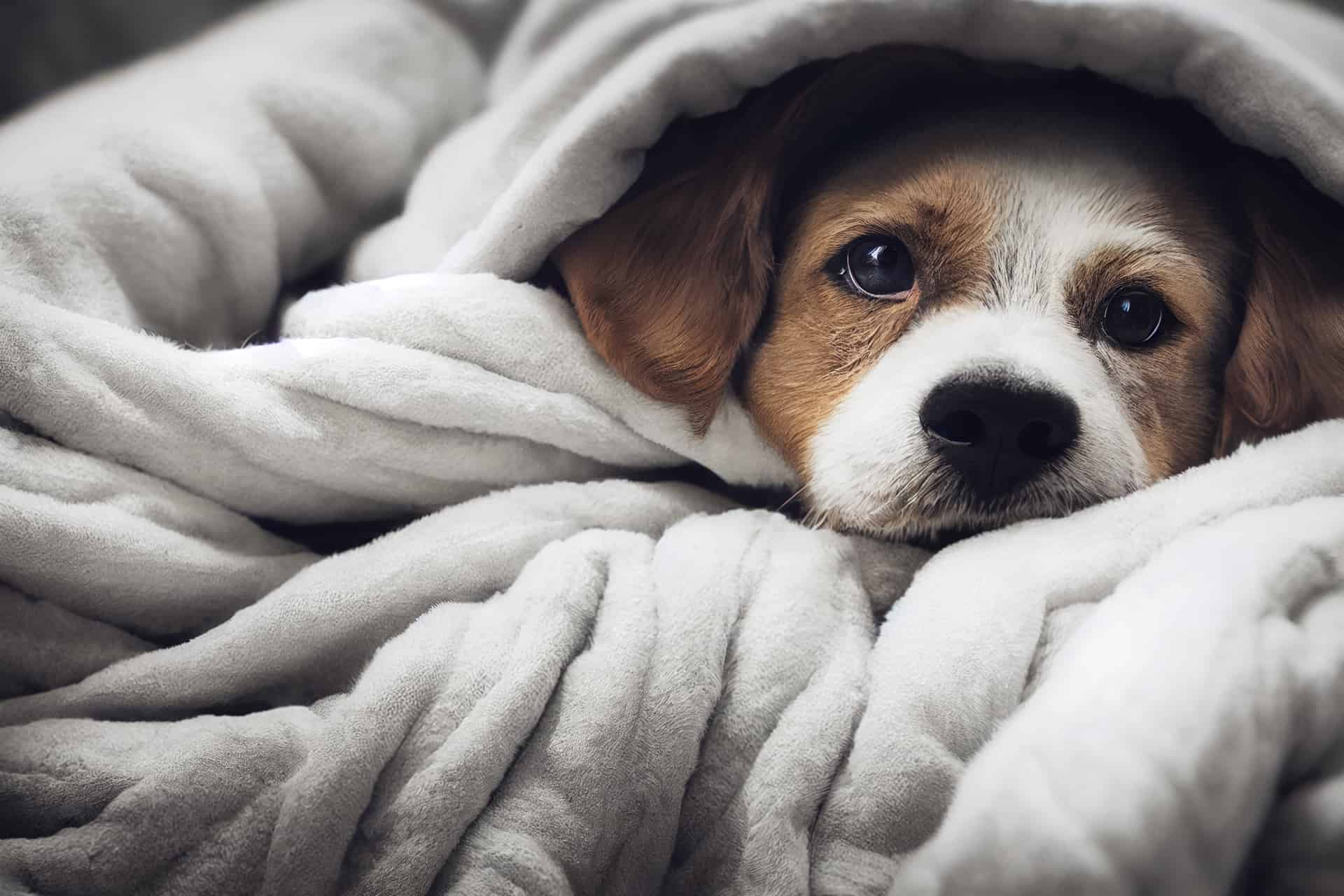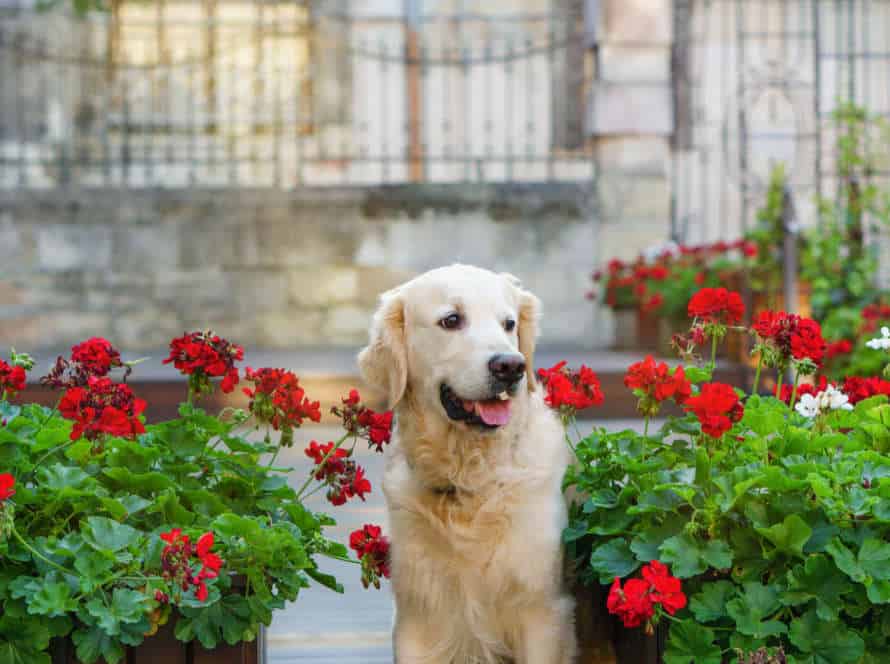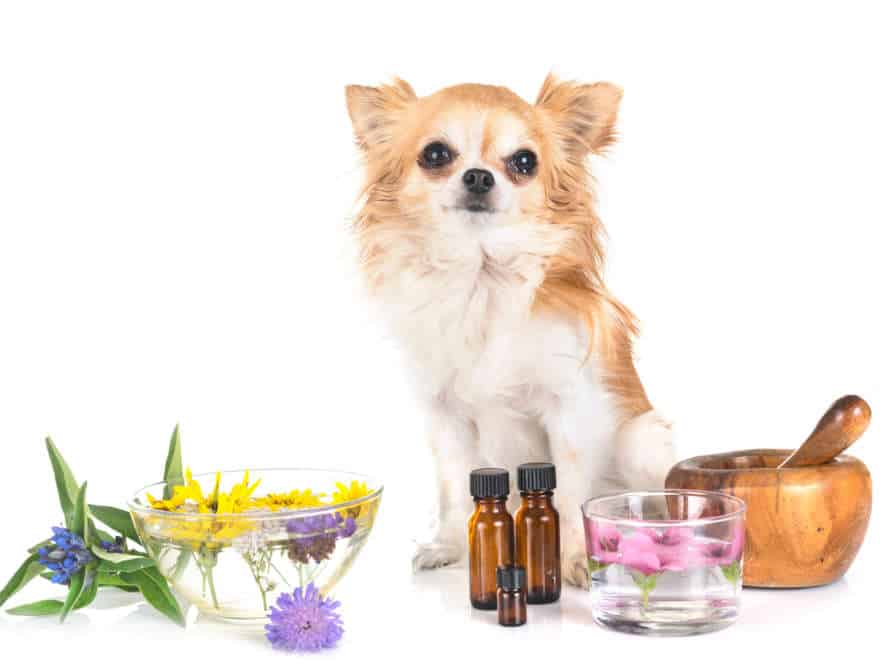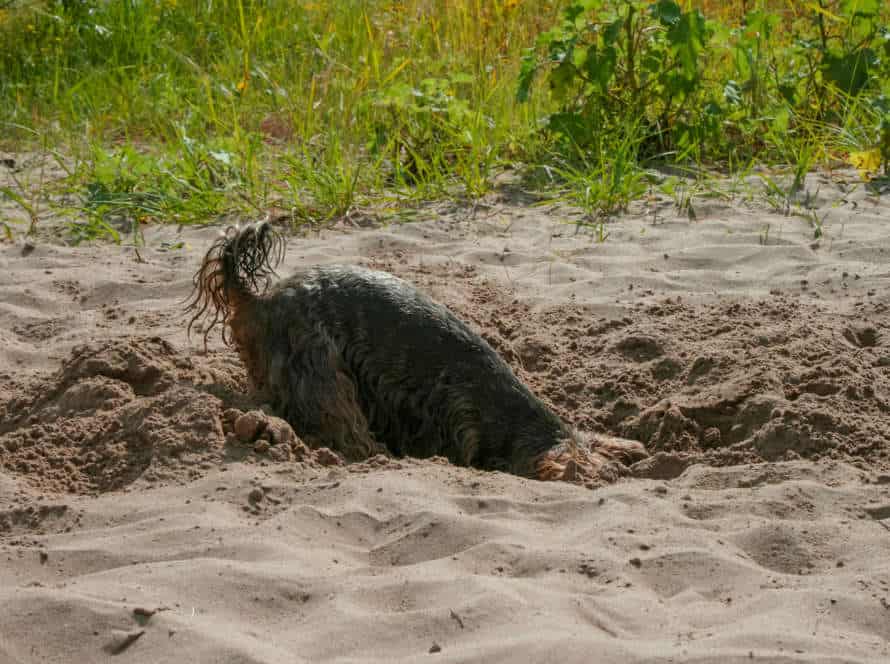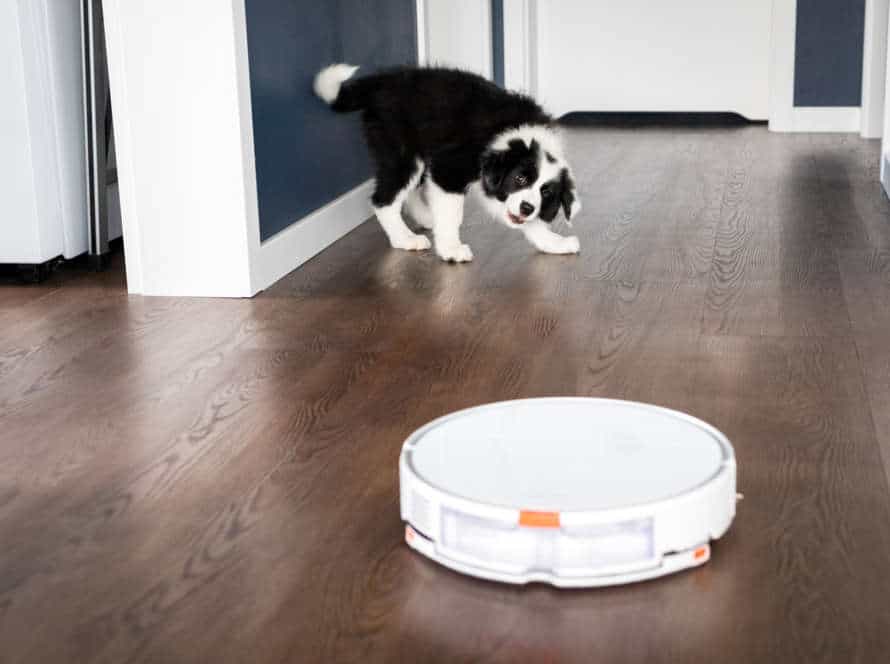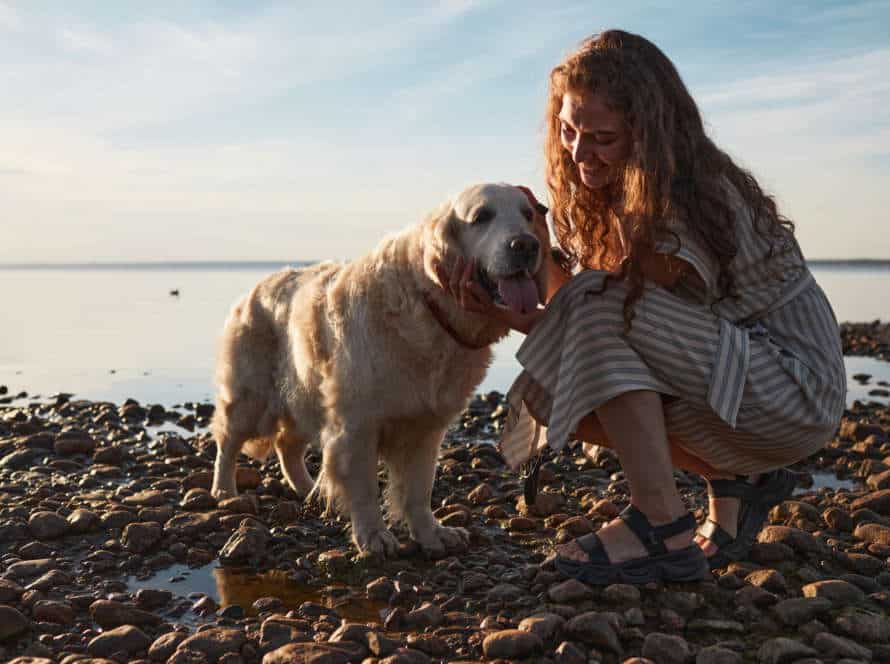Creating a Safe Space for Your Anxious Dog
Anxiety in dogs is normal. Making a secure zone for your anxious dog can help them feel safe and ease their worries. Here are some tips:
- Pick a quiet spot in your house for your dog to hide when they get anxious.
- Put down comfy bedding and things that smell like you e.g. a blanket or tee.
- Use white noise or calming music to drown out external sounds that may bother your pup.
- Try pheromone sprays or diffusers for a more calming atmosphere.
- Make sure your dog has enough water and toys to stay entertained.
Creating a safe space can give your dog some security and lower their anxiety levels.
Outline-
Creating a secure and tranquil spot for your anxious pup is essential in helping them feel safe and at ease. Here’s a plan of steps you can take to build a haven for your furry pal:
- Pick a specific area: Select a quiet place in your house that is far away from busy places to create a secure space for your anxious dog.
- Include comfortable bedding: Fill the spot with soft bedding, such as a comfy blanket or dog bed. This will give your furry friend a cozy and familiar spot to rest.
- Add comforting aromas: Try using pheromone sprays, essential oils, or scents that imitate calming canine pheromones.
- Include toys and treats: Supply your furry friend with their favorite toys and treats to keep them entertained and relaxed.
- Soften the atmosphere: Utilize gentle light and tranquil music to make a peaceful and soothing atmosphere for your nervous pet.
By making a safe space for your anxious dog, you can help them feel comfortable and relaxed during times of stress and anxiety.
Understanding Anxiety in Dogs
Dog anxiety can be caused by many things, like loud noises or changes in their routine. As the owner, it’s important to be aware of signs of distress in your pet. Make a safe and comforting environment for them so they can work through their fear. To help your pup feel more secure, try to recognize what’s causing their worry and take steps to prevent it.
Causes of anxiety in dogs
Anxiety in dogs has various sources. For instance, separation anxiety, fear, aging, or past trauma can cause anxious behavior.
Separation anxiety is the most common trigger. When separated from their owners or caretakers, dogs may feel distressed, panicked, bored, or lonely.
Past trauma, like abuse or neglect, can result in anxiety disorders in older dogs.
Ageing can also cause anxiety. Senior dogs may struggle with cognitive decline or physical health changes that lead to anxiousness.
Socializing your puppy is vital to prevent anxiety. Poorly socialized dogs are likely to be scared or anxious in new environments.
Creating a secure environment for your anxious dog is essential. Proactive action to address the sources of anxiety can help reduce their anxious behavior and improve their quality of life.
Signs of anxiety in dogs
Anxiety in dogs is a common issue. As a pet parent, it’s vital to be aware of the signs. Look out for these:
- Restlessness & pacing.
- Panting or rapid breathing.
- Excessive barking or howling.
- Destroying home stuff.
- Hurting self or over-grooming.
- Loss of appetite or digestive issues.
- Shaking or trembling.
If you spot any of these, create a secure space for your dog to wind down. Try a crate, a quiet room, or an area in your house. You could also use calming techniques like massage or aromatherapy. Consult with a vet for more serious cases. With the right help & care, managing dog anxiety is possible.
Types of anxiety in dogs
Anxiety in pups can show itself in many ways. Knowing the various kinds of anxiety can help pet owners figure out what sets it off and give their furry pals the right care.
- Separation Anxiety: When left alone, dogs with this type may be very distressed. Their behavior may include destruction, nonstop barking/whining, and self-harm.
- Noise Anxiety: Loud noises (thunderstorms, fireworks, music) can trigger agitation and fear in some dogs. They may hide, shake, or be destructive.
- Social Anxiety: This can cause problem in social situations with new people/animals. They may avoid contact, hide, or become aggressive.
- Travel Anxiety: Some canines get worked up while traveling. Symptoms are panting, drooling, vomiting, and whining.
Identifying the kind of anxiety your dog has can help you create a secure environment and provide the perfect care – be it medicine, therapy, or training.
Creating a Safe Space for Your Anxious Dog
Your anxious pup needs a safe place to be calm. A snug, quiet area to escape to when they feel overwhelmed. Setting up a safe space can help reduce their fear, give them confidence and make them feel secure. Learn how to set up a safe space for your anxious dog now!
Identify your dog’s triggers
Identifying your pup’s triggers is essential to making a safe zone for your anxious pet. A trigger is anything that can make them nervous, anxious or scared. Here are some tips to spot triggers:
- Observe their behavior. Notice any differences in their reactions to different situations and jot down signs like trembling, crouching, growling or barking too much.
- Read their body language. See if they show indicators of fear or anxiety like flattened ears, tucked tail or wide pupils.
- Figure out possible triggers. After seeing their reaction, try to figure out what caused it. It might be loud noises, strangers, other animals, smells or toys.
- Evade triggers. When you know what triggers your pet, take steps to avoid or minimize them. This might mean avoiding places or situations, or distracting them with toys or snacks when triggers appear.
Pro Tip: Always stay patient and calm when helping an anxious pooch. It takes time, work and lots of love to help them feel secure.
Designate a safe space for your dog
Create a safe area for your anxious pooch. It can be a crate, a room, a bed or a dog house. This will give them a sense of security. Add blankets and bedding to make it a cosy spot. Give them access to water, toys and, if needed, pee pads. Train your pup to associate it with positive vibes. Praise, treats and comforting words will help. And always keep an eye on them when they’re in their safe zone – to make sure they’re comfy and there are no accidents!
Add calming elements to the safe space
Creating a safe space for your anxious pup? Adding calming elements can help reduce stress and make them feel more secure. Here are a few ideas:
- Soft bedding – provide a comfy bed or pile of blankets.
- Calming scents – use diffusers or sprays with lavender, chamomile or vanilla.
- White noise – get a white noise machine or play soothing music.
- Safe toys – give them toys to play with and associate the area with positive experiences.
- Crate cover – if they feel safe in their crate add a cover to create a den-like environment and block out excess light and sound.
By adding these calming elements to your dog’s safe space, you can help ease their anxiety and create a relaxed and secure environment.
Behavioral Techniques for Managing Your Dog’s Anxiety
Dogs can become anxious in many ways. For example, they may bark a lot, or destroy things. So, it’s essential to give them a safe place. To do this, you can use different behavior techniques.
In this article, we’ll discuss these techniques. This can help you create a secure environment for your pup and manage their anxiety.
Positive reinforcement training techniques
Positive reinforcement training can help manage your pup’s anxiousness. Here are some techniques you can use:
- Use clicker training. This method marks the desirable behavior and rewards it with treats and praise.
- Treat-based training rewards your pet for good behavior, building trust and confidence.
- Verbal praise like “good boy/girl” encourages positive actions.
- Crate training gives your pooch a safe space to retreat when anxious.
By using positive reinforcement, you can help your dog overcome their anxiety and have a better life!
Counterconditioning and desensitization
Counterconditioning and desensitization are two great tactics. They help manage your pup’s anxiety and create a calming space for them.
Counterconditioning works by changing your dog’s reaction to a trigger. You pair the trigger with something positive, like treats or toys. For example, if your pup’s scared of loud noise like thunder, give them a treat each time they hear it. It’ll show them it’s not so bad.
Desensitization involves carefully exposing your pup to the trigger at a low intensity. Eventually, their fear will lessen over time. Say, if your pup’s scared of strangers. Invite a friend over and have them sit quietly in the same room (but not too close). Gradually increase their distance.
By using these two techniques consistently and with patience, your pup will feel more secure and their anxiety will reduce.
Distraction training techniques
Distraction training can help manage your pup’s anxiety. Here are some techniques:
- Use toys that dispense treats, such as Kongs or puzzles.
- Teach obedience commands like “sit,” “stay,” and “come.”
- Offer high-value treats like cheese or chicken.
- Create a safe space with plenty of toys, water, and bedding.
With patience and training, distraction techniques can help reduce anxiety and improve behavior.
Medications and Supplements for Managing Your Dog’s Anxiety
Managing your pup’s anxiety can be tough. Meds and supplements can help to manage their fear and reduce the severity of symptoms. This section will explore the medicines and supplements available to help manage your doggie’s anxiety.
Anti-anxiety medications
Anti-anxiety meds can be great for controlling your pup’s anxiety.
Here are some of the most common ones:
- Fluoxetine (Prozac). Used to tackle separation anxiety, aggression, & obsessive-compulsive behavior. May take weeks to see full effects. Side effects include: lethargy, loss of appetite, diarrhea.
- Sertraline (Zoloft). Prescribed for generalized anxiety & phobias. Fatigue, upset stomach, & decreased appetite side effects.
- Clomipramine (Clomicalm). Helps with separation anxiety, noise phobias, & other fear-based behaviors. Lethargy, dry mouth, & constipation side effects.
- Alprazolam (Xanax). Short-acting anti-anxiety drug used in acute situations. Side effects: sedation, lethargy, disorientation.
Make sure to consult your vet to decide the best course of treatment. And create a safe space, use supplements & behavior modification to help manage anxiety.
Pro tip: Never give pup any meds or supplements without consulting your vet first.
Herbal and natural supplements
Herbal and natural supplements are an effective way to handle your pup’s anxiety, without relying on prescription meds. Popular supplements for pet anxiety include:
- CBD oil – from hemp and non-psychoactive, it can help reduce anxiety and promote relaxation.
- L-theanine – an amino acid found in green tea. Calms the nervous system and reduces anxiety.
- Valerian root – a natural sedative to calm anxious pooches and promote sleep.
- Chamomile – a natural sedative to help calm doggos and relax.
Before giving any herbal or natural supplements, chat with your vet to confirm they’re appropriate for your pup’s needs. Creating a safe, calming space for your anxious pup, with their favorite toys and blankets, can also help.
CBD oil for dogs with anxiety
CBD oil is an amazing, natural supplement that helps manage anxiety in dogs. It comes from the hemp plant, and has no psychoactive elements – so it’s safe for pets to take.
Here are a few steps to help you use CBD oil for your pup’s anxiety:
- Consult your vet first – to make sure it’s safe and the right dosage for them.
- Choose a top-notch CBD oil, designed specifically for dogs.
- Start with a small dose, and increase as needed – to find the right amount.
- Monitor your dog’s behavior and symptoms – to see if the CBD is working.
In addition to CBD oil, create a peaceful, calming environment for your anxious pup. Include a comfy bed, toys, and a designated area for them to chill.
When to Seek Professional Help for Your Anxious Dog
Anxious dogs need professional help. Manifestations of dog anxiety can be hard to spot. Plus, it’s tricky to know how to help. That’s why vets and behaviorists are so useful. They can provide the answers and guidance to help your pet manage their anxieties.
So, when should you seek professional help? And what are the benefits? Let’s investigate!
Signs that your dog’s anxiety requires professional help
Anxiety can ruin a dog’s quality of life. Signs to look out for:
- Excessive barking, whining, or howling.
- Unusual chewing, digging, or destruction of objects.
- Shaking or trembling.
- Heavy panting or breathing.
- Aggressive behavior towards people or other animals.
- Refusing food or water for too long.
- Restlessness or constantly pacing.
- Loss of sleep or appetite.
If your pup exhibits any of these signs, it’s time to get professional help. A vet can diagnose and make a plan to reduce their anxiety. To help at home, create a calming environment with pheromone sprays, comfortable beds, and a routine.
Types of professionals who can help manage your dog’s anxiety
Managing a pooch with anxiety can be tough for pet owners. To reduce the stress, seek help from a trained pro!
Here’s a list of who can help with your pup’s anxiety:
- Vet: Make an appointment with your vet to check for medical conditions causing the anxiety. They can also prescribe meds and give advice on behavior modification.
- Certified Dog Trainer: Get a certified doggy trainer to teach your pup new behaviors and skills to manage their anxiety, like desensitization training.
- Veterinary Behaviorist: A vet behaviorist can diagnose and treat behavioral problems in pets. They’ll create a tailored treatment plan for your pup.
- Pet Sitter/Walker: Hire a pet sitter/walker to give your canine a safe and comfy environment when you are away.
By finding the right help, pet owners can create a safe space for their anxious dogs and give them the best care.
Common treatment options recommended by veterinarians
If you spot signs of anxiety or stress in your beloved pet, it’s vital to get professional help. Here are some popular treatments your vet might recommend:
- Behavioral training – Positive reinforcement and counter-conditioning can help dogs come up with new ways to cope with anxiety triggers.
- Medications – Anti-anxiety meds prescribed by a vet could reduce anxiety symptoms in some dogs.
- Therapeutic products – Calming sprays, supplements and weighted vests can soothe the anxious pup.
- Creating a safe space – Give them a private, tranquil place such as a crate or room to make them feel secure during stressful times.
Remember, every dog is unique, so you should consult your vet and create a personalized treatment plan for your pup.
Frequently Asked Questions
Q: What is a safe space for my anxious dog?
A: A safe space is a designated area where your dog can feel secure and comfortable during times of stress or anxiety. It should be a place where your dog can retreat to and feel calm.
Q: How do I create a safe space for my anxious dog?
A: You can create a safe space by providing your dog with a separate, quiet area that is equipped with all of the things they need, such as water, food, and toys. You can also use a crate or dog bed to create a space that feels secure to your dog.
Q: Why is it important to create a safe space for my anxious dog?
A: Creating a safe space for your anxious dog can help alleviate their anxiety and help them feel more comfortable in their surroundings. It can also help prevent unwanted behavior that may occur when they are feeling stressed.
Q: Can I help my dog feel more comfortable in their safe space?
A: Yes, you can! You can help your dog feel more comfortable in their safe space by spending time with them in there, offering them treats, and providing them with soothing sounds or scents.
Q: What are some signs that my dog needs a safe space?
A: Signs that your dog may need a safe space include excessive barking, nervousness, hiding, panting, and destructive behavior. These behaviors may occur during times of stress, such as during thunderstorms or when left alone for extended periods of time.
Q: How can I introduce my dog to their safe space?
A: You can introduce your dog to their safe space by bringing them in there and offering them treats or toys. You can also spend time in there with them to help them feel more comfortable and secure.

